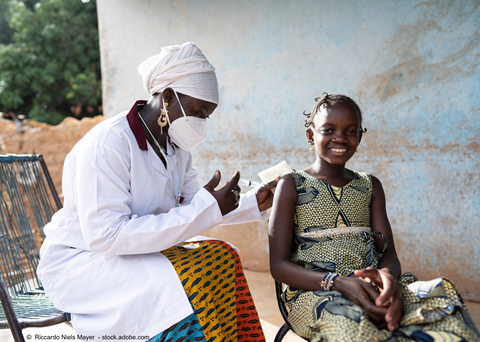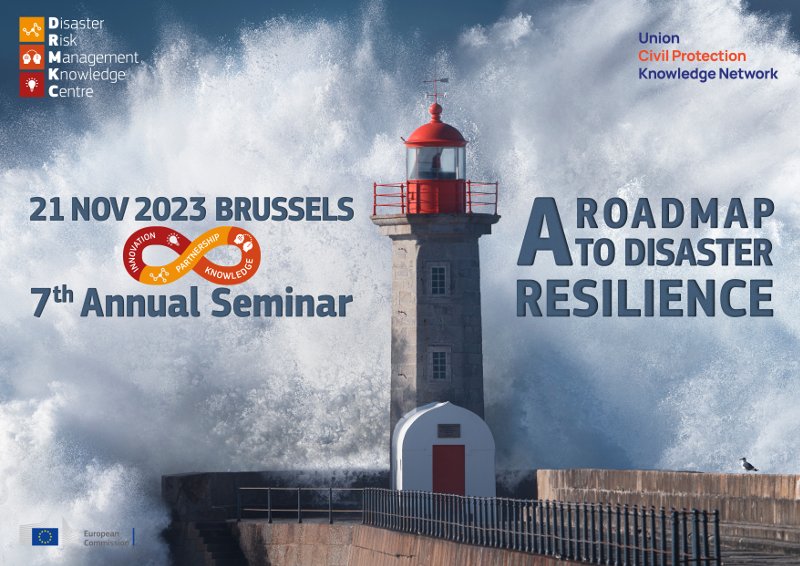October 2023 available
News
Agriculture, and more broadly food systems, play a central role in plans and programs to achieve the Sustainable Development Goals (SDGs) and the Paris Agreement’s objectives of climate mitigation, adaptation, and resilience.
Today, Cindy McCain, the Executive Director of the World Food Programme (WFP) and Dr. Sultan Al Jaber, the President of the UN Conference on Climate Change (COP28), called for urgent action to scale up climate action in fragile and conflict-affected settings.
Production prospects across most basic foodstuffs are favourable, but extreme weather events, rising geopolitical tensions and sudden policy changes pose risks for global food production systems and could potentially tip delicate demand-supply balances and dampen prospects for trade and global food security, according to a new report from the Food and Agriculture Organization of the United Nations (FAO).
We are excited to share the latest advancements in the INFORM Subnational risk models developments. The INFORM subnational risk models support national authorities with disaster risk reduction planning at the local level.
National actors lead and fund the development with local stakeholders. It is locally–owned process under the umbrella of INOFRM initiative that provides limited technical support service. This ensures sustainability, local support, and integration into decision-making processes to build local capacity while maintaining quality standards.
The Training on the INFORM Subnational Risk Methodology for MapAction with INFORM technical partners
The recent training on the INFORM Subnational Risk methodology, organized by the DRMKC from September 19th to 21st, marked a significant achievement in supporting the development of INFORM Subnational risk models.
Technical partners from OCHA, UNDRR, UNICEF, responsible for developing and maintaining INFORM Subnational risk models, and MapAction, a new INFORM partner, came together to enhance their understanding of the methodology and exchange experiences in model development and implementation.
MapAction has offered to provide technical support for those interested in creating INFORM Subnational risk models. The training aimed to equip MapAction with the necessary skills to assist INFORM Subnational model owners.
Centralized support system for INFORM subnational processes with INFORM-MapAction Partnership
The initiative has progressed with the creation of a central support system involving three key organizations: Global INFORM Coordinator (OCHA), Global INFORM Scientific Lead (JRC), and Global technical support for INFORM Subnational (MapAction). This system will function through the INFORM website, enabling local stakeholders and partners to submit assistance requests customized to their requirements.
MapAction is currently updating the INFORM subnational risk model for Niger and creating a new model for Eswatini. Their partnership with INFORM enhances support for countries in developing these models, enabling better understanding of risks and evidence-based disaster risk management planning.

Amid the looming threat of El Niño expected to severely affect millions of people, the Food and Agriculture Organization of the United Nations (FAO) has launched an updated Anticipatory Action and Response Plan to reduce the projected impacts of this climate phenomenon on agricultural livelihoods and food security of the most at-risk and vulnerable populations.
The Global Food and Nutrition Security Dashboard enables humanitarian and development agencies along with governments to quickly get an overview of the food and nutrition insecurity situation worldwide.
Researchers from the European Commission’s Joint Research Centre assessed the accessibility of healthcare facilities in Sub-Saharan Africa (SSA). Using the UN's Degree of Urbanisation (DEGURBA) methodology, the research has shown a disparity between urban and rural healthcare facilities.
Healthcare Disparities in Sub-Saharan Africa
In urbanized areas in Sub-Saharan Africa - encompassing major cities and adjacent regions - the accessibility to healthcare is notably superior to that of rural areas. The research shows that 95% of the urban population resides within a 30-minute radius of a healthcare facility. This is largely attributable to the strategic allocation of resources and the robust infrastructure inherent to metropolitan areas, designed to serve a denser population.
Rural regions in Sub-Saharan Africa face contrasting scenario. In remote villages and dispersed rural areas, numbers go down to 65% of the population having a healthcare facility at a 30-minute distance. Of the remaining ones, 10-15% are over 3 hours away from any medical establishment.
More people in SSA are moving to cities faster than before. As more people head to cities looking for better chances, city healthcare services will face more pressure. At the same time, with fewer people living in rural areas, there might be less interest in improving the healthcare facilities there.
Urban Growth and Healthcare in SSA: Challenges and Opportunities
This study shows a clear gap in how easy it is to get healthcare in cities compared to the countryside. Cities are growing and need more resources, while rural areas need better facilities to make healthcare easier to access.
Another key issue is that the growth of cities is changing healthcare in SSA. As more people move to cities and fewer people live in the countryside, it’s important to make sure healthcare services change with this trend. Policymakers need to plan ahead and make sure everyone, no matter where they live, can get the healthcare they need.
Lastly, this study is telling organizations around the world that they need to work together to fix the healthcare problems in SSA. The UN has a method that can help figure out where the problems are – the Degree of Urbanisation. By working together using this method, it’s possible to make big changes and make sure everyone in SSA can get to a healthcare service, no matter where they live.
Background Information
The European Commission has long been working together with African partners. Other initiatives - not linked with this specific work - include the Africa Knowledge Platform, which features a layer dedicated to the electrification of healthcare facilities in Sub-Saharan Africa.

Navigating the complex world of Disaster Risk Management (DRM) demands a mix of staying updated, collaborating strategically, and tapping into innovative solutions. The 7th DRMKC Annual Seminar will be the place where all these elements come together to build effective disaster resilience strategies. Here’s what it has to offer:
Turning Knowledge into Action
This seminar isn't just about talking; it's about turning insights into practical strategies. If you're eager to bridge the gap between scientific knowledge and policy implementation in DRM, you'll find valuable takeaways here.
A Hub for Collaboration
The spotlight is on co-creating solutions and fostering engagement among multiple stakeholders. If collaboration is a priority for you, this event could be your ideal platform to get to know key actors who have DRM experience and are ahead of – and influencing - the latest trends on the topic.
Diverse Workshops
The seminar covers a wide range of topics, from risk communication to early-warning systems and DRM governance. You will have a chance to discover content that resonates with various aspects of DRM and learn from top-notch speakers – most working on policy or in reputable research or international institutions.
The conference’s accessibility via live stream also makes it an appealing choice for those who prefer digital platforms or who might to physically be in Brussels. See the full agenda and how to register / follow the web streaming in the DRMKC website.

The collective open letter included signatures from the WWF, Global Alliance of the Future of Food, Global Alliance for Improved Nutrition, The Food System Partnership and the Food and Land Use Coalition.
Reading time: 8 minutes.
September 2023 available
Over the last 30 years, an estimated $3.8 trillion worth of crops and livestock production has been lost due to disaster events, corresponding to an average loss of $123 billion per year or 5 percent of annual global agricultural gross domestic product (GDP), according to a new report released today by the Food and Agriculture Organization of the United Nations (FAO).
To make more progress in the fight against hunger, the world needs to make at-risk communities less vulnerable to climate shocks and other emergencies, the UN World Food Programme said today.
Teaser
The ongoing strong El Niño event, which is forecast to reach peak intensity in late 2023 and then dissipate by mid-2024, will have both negative and positive effects on acute food insecurity across the globe.
Here is the short answer from our modeling: Climate change is likely to be more than 2.5 times more destructive to tropical rainforests than cropland expansion at the global level between 2005 and 2050.
The biodegradable fraction of products, waste and residues from biological origin from agriculture, including vegetal and animal substances, from forestry and related industries, fisheries and aquaculture, as well as the biodegradable fraction of waste, including industrial and municipal waste of biological origin.
This roadmap by the Fraunhofer-Gesellschaft for implementing the bioeconomy in Germany provides recommendations to help accelerate the market ramp-up of bio-based products and technologies, and to address social and ecological challenges. It shows that removing regulatory hurdles, getting technology transfer investments off the ground, and engaging stakeholders and consumers at an early stage can speed up the deployment of a circular bioeconomy, where biogenic raw materials are used in value creation cycles.
The Spanish Presidency of the Council of the European Union, in close consultation with officials of the 27 Member States, the European Commission, the Secretariat of the Council of the EU, and several academics and private sector representatives, presented Resilient EU2030, a strategic proposal to ensure the EU’s Open Strategic Autonomy and global leadership by 2030. The document explicitly mentions the role of the bioeconomy and bio-based materials in reducing the EU’s foreign dependencies while mitigating climate change.
